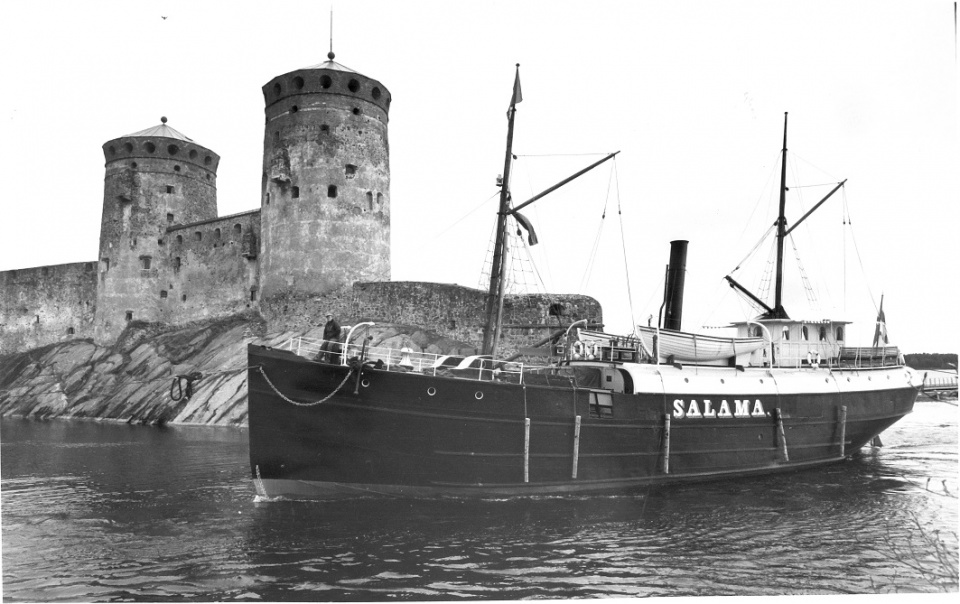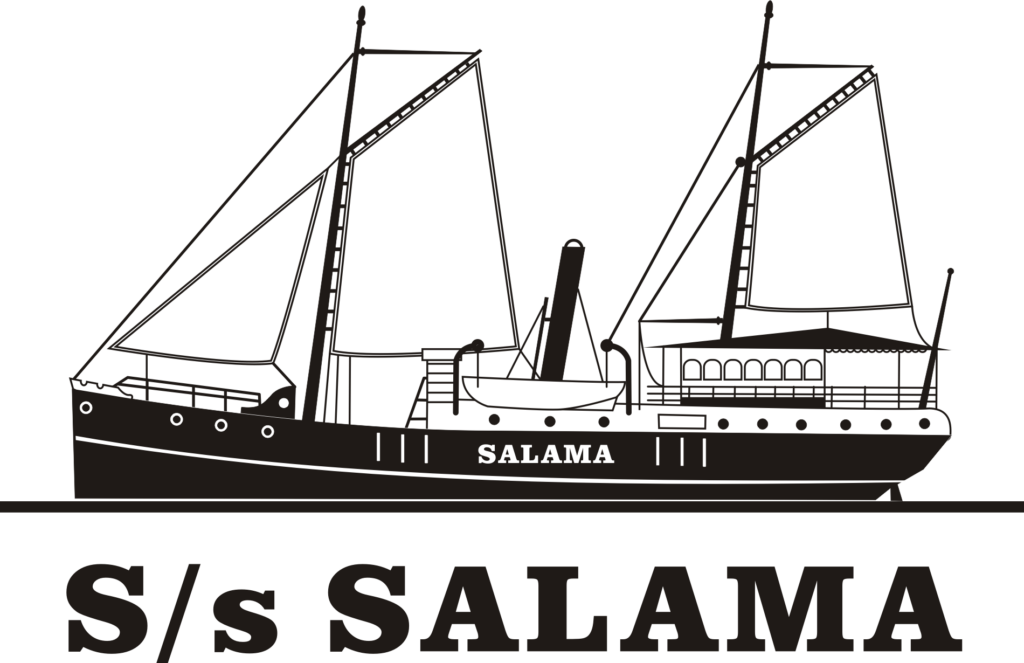Steam Schooner Salama
Have you heard the story of the Salama? The steam schooner Salama (“Lightning”) sank after crashing into another ship more than 120 years ago and was left on the lakebed for decades. Yet today, you can find the Salama docked at Riihisaari, afloat as anything. How did that happen?

The steam schooner Salama is a combined cargo and passenger ship, dating back to the era when steam power was starting to overtake wind propulsion. A propeller steamship with auxiliary sails, the Salama was commissioned from the Vyborg machine works by a local Savonlinna company in 1874.

- Built at the Vyborg machine works in 1874.
- Length 31 m.
- Width 7 m.
- Draft 2.5 m.
- Speed 7.5 knots.
- Engine no longer functional.
The Salama settled on the Joensuu–Savonlinna–Vyborg–St Petersburg route, though in her early years she often sailed to Lübeck as well. Among other things, the Salama would transport glassware from the Saimaa town of Enonkoski to St Petersburg and bring back grains and a variety of trade goods, from fruits and jewellery to bolts of silk and bagels. The ship’s overall freight capacity was 110 tonnes with space for 60 passengers, so she often also carried tourists from St Petersburg.
The Night of the Wreck
At 10:30 PM on September 13th 1898, the Salama was near the Parkonsaari lighthouse, heading from Lappeenranta towards Puumala on her regular St Petersburg – Joensuu route, when the passenger ship Ilmari, heading the other way, rammed into her starboard side.
Besides the Salama and Ilmari themselves, other ships were also near the site of the accident: the steam tugboat Ahkera and the smaller tug Ruttois, towing a timber raft behind it. Passing through a narrow strait, the Salama saw the Ilmari, the Ruttois and the timber raft coming ahead on the right-hand side of the passage and dodged to the left, while sounding the appropriate signals. The Ilmari sounded the same signals back, meaning the message had been received, as later testified by the skippers of the Ruttois and the Ahkera.
Immediately following this exchange, the Ilmari crashed into the Salama at full speed. Water rushed in through the hole in her starboard side and in about half an hour the Salama sank, bow first, less than a kilometre from the shore at Parkuniemi. To the shock of all assembled, the Ilmari went along its way after the collision and did not stay to help the crew and passengers of the Salama on the dark autumn night.
Luckily, the steam tugboat Ahkera was working nearby and soon reached the foundering ship to begin rescue operations.
No lives were lost in the collision of the Salama and the Ilmari, though without the Ahkera’s immediate assistance things could have panned out differently. It turned out later on that the Ilmari’s first mate at the time of the accident did not have the necessary qualifications. Some posit that he may have misunderstood the Salama’s signals and tried to evade her “normally”, i.e. to the right. He may have misjudged the distances and speeds of the ships involved, using only their moving lights as a basis.
After a lengthy court case, the Ilmari was eventually found to be the guilty party, and as such was remanded over to the company that owned the Salama.
Seven Decades Beneath the Waves
The Salama lay at the bottom of Lake Saimaa for 73 years. In 1970 her mast caught a passing tugboat’s towline and was yanked up to the surface. The fleet at Enso-Gutzeit Ltd’s Savonlinna shipyards decided to test their recovery equipment, and in 1971 the Salama was raised from the bottom. The lake water, with no salt and low oxygen, had preserved the ship astonishingly well – even some of the grain in the cargo hold was still there.
The Saimaa Sailing Museum Association was founded with the purpose of taking care of the Salama. Together with the Finnish Association for Maritime History and the city of Savonlinna, they renovated the Salama as a museum ship, albeit without functional engines. The Salama and all its associated items were donated to the Provincial Museum of Savonlinna in 1985.